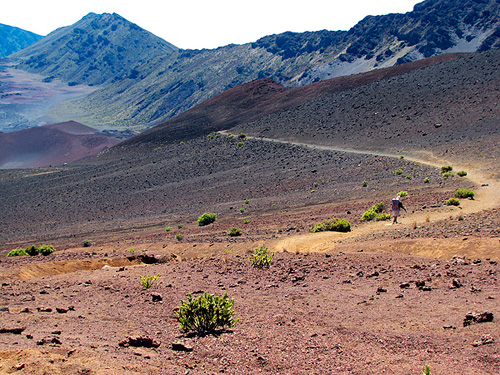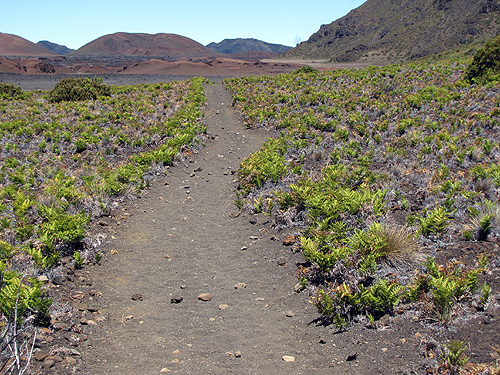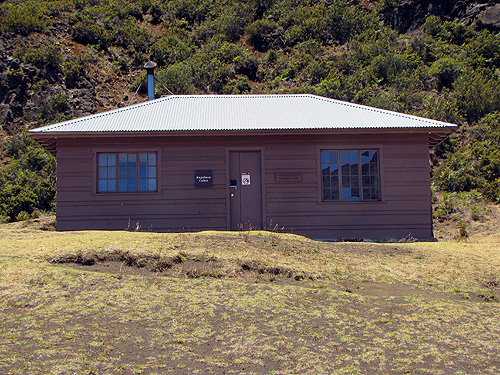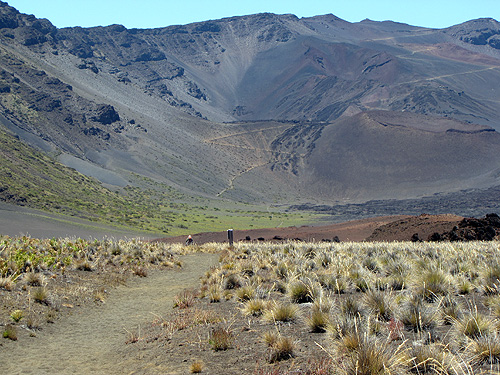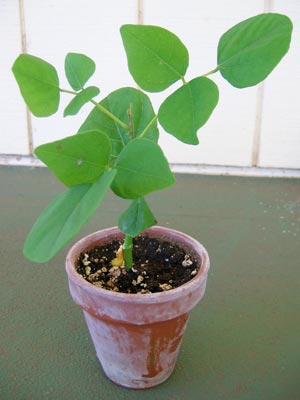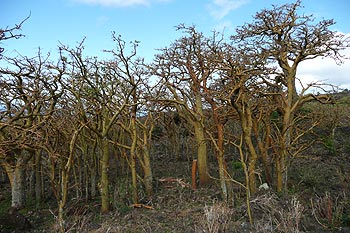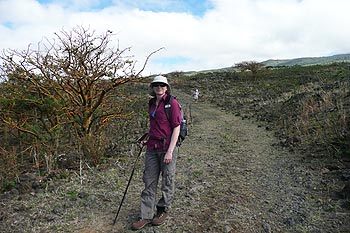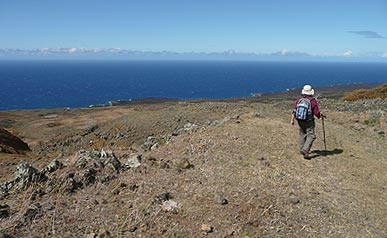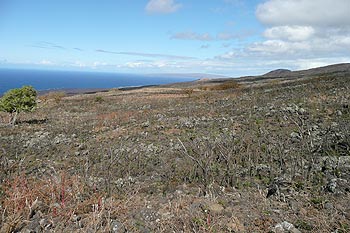Haleakala Crater Rim to Kaupo Ranch
Monday, July 4th, 2011Bucket List: a list of dumb things you decide you’ll do before you die.
Yesterday’s great adventure was a bucket list item: a day hike from Haleakala National Park’s crater rim visitor center, elevation 9,750-feet, to the Kaupo Trailhead, 17+ miles away, at an elevation of 950-feet.
Yes, it was all downhill, and yes, downhill is really, really hard after the first ten miles.
Here, at the start: my husband Ron and I, prepared for high-elevation sun. It’s 9:30am:

Point zero: initiate
This is the first half of where we’re going:

Stage 1 complete: We’ve descended a little over 3000′ and reached the crater floor. Photo shows the next segment, a flat stretch to Kapalaoa Cabin:

Stage 2 complete: That’s me outside of Kapalaoa Cabin, with the trail continuing behind me. Seven miles done so far. It’s 11:30am.

Stage 3 complete: Ron and I at the Paliku trail junction. We’ve seen four other people since the end of Stage 1. Two we met at this junction: a couple of young men who “touched the ocean” then headed uphill, making for the summit. At this point they were beginning to question their own judgment, but I’m sure they finished before we did.

We’ve done ten miles so far. Now the great descent begins. We will see no other people until our son picks us up at Kaupo Ranch.
Stage 4: the descent through Kaupo Gap, from Paliku to the park boundary. Here’s a look at where we’re going, though this photo does nothing to show the incredible beauty of this area:

 Kaupo Gap is my favorite area of the park. It’s gorgeous, with a native forest that’s recovering nicely since the goats were eradicated from park lands. It’s also incredibly hard to get to, being a ten-mile hike from the visitor center, or a six to eight mile hike up the gap on a horribly steep trail in bad condition–and of course getting there is only half the story. You have to get out again.
Kaupo Gap is my favorite area of the park. It’s gorgeous, with a native forest that’s recovering nicely since the goats were eradicated from park lands. It’s also incredibly hard to get to, being a ten-mile hike from the visitor center, or a six to eight mile hike up the gap on a horribly steep trail in bad condition–and of course getting there is only half the story. You have to get out again.
We’ve got a ways to go yet:

Stage 5: the descent through the cow pastures. We’ve done about 14 miles so far. There’s a fence at the boundary between the park and Kaupo Ranch. The contrast between grazed and protected lands is, of course, profound. From now on, it’s cattle pastures:

We’ve got “only” three or four miles left to go, but we are not almost there by any means. This is by far the hardest part of the hike. The terrain is steep, we’re walking on a ranch road with treacherous sections covered with rolling rock, and our downhill muscles and joints have begun to take serious notice of the abuse. Our destination looks disturbingly far away:
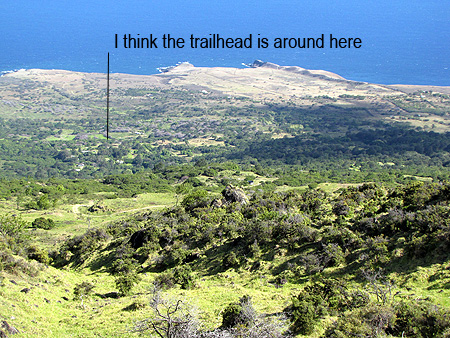
I put my camera away and focused on getting down without twisting an ankle.
The last adventure of the day was wading through a herd of sixty-plus agitated cattle milling around the trailhead gate. Most were cows and calves. One was a bull. I was terrified. But they stood between us and the car, so we forged ahead and got through without incident. It was around 6:30pm, and our darling son had just arrived to pick us up.
Here’s a rough map of the day’s trek:

It was an interesting and challenging day, and we get to check an item off the bucket list, but in all honesty, I’m not feeling any compulsion to ever do it again!








